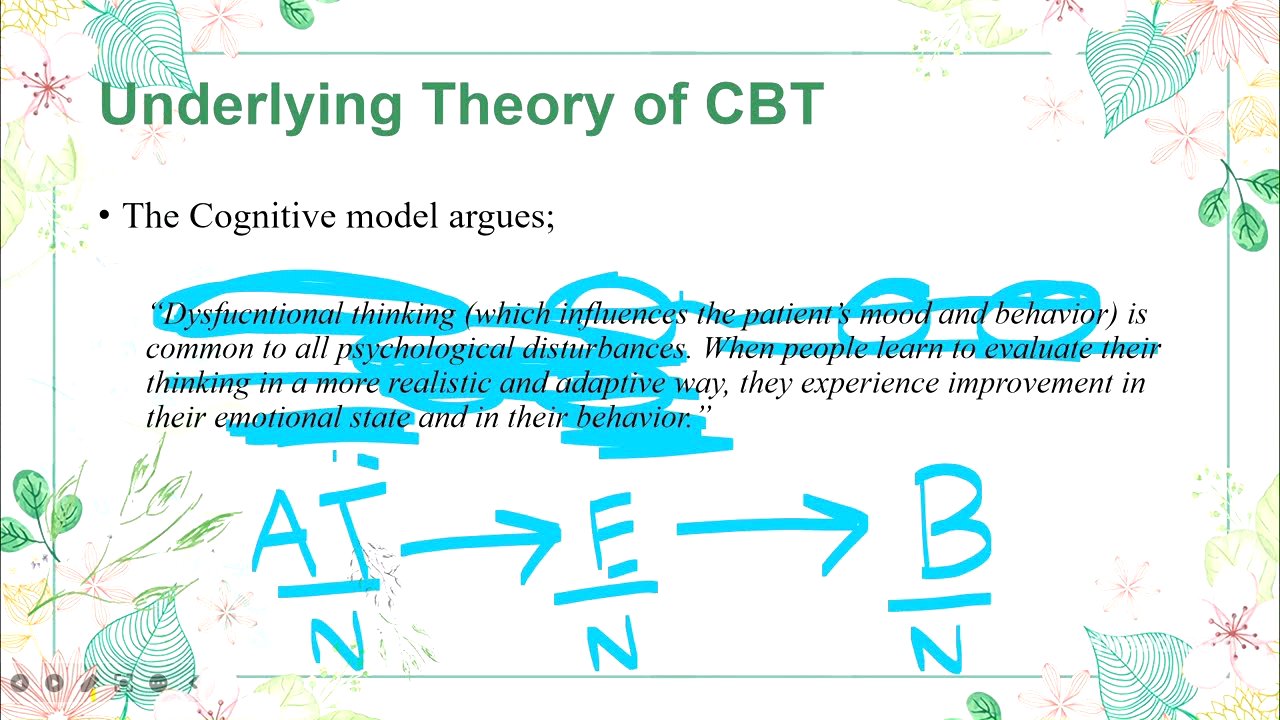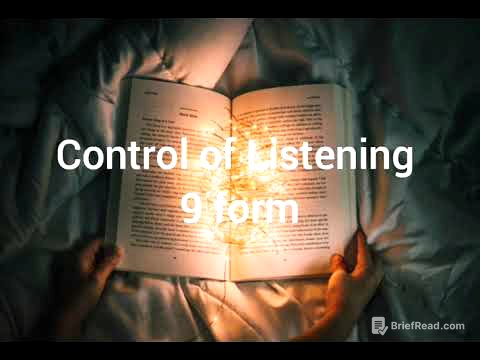TLDR;
This video introduces Cognitive Behavior Therapy (CBT) as a structured, short-term, present-oriented psychotherapy aimed at solving current problems by modifying dysfunctional thinking and behavior. It covers the therapy's origins with Aaron Beck, its theoretical framework rooted in Stoic philosophy, and its development through empirical research. The lecture also details the cognitive model, emphasizing the interplay between automatic thoughts, intermediate beliefs, and core beliefs, and how CBT targets these levels to improve emotional states and behaviors.
- CBT is a present-oriented therapy focused on current cognitive processes.
- The therapy aims to modify dysfunctional thinking and behavior through techniques like cognitive reframing.
- Empirical research supports CBT's efficacy for various psychiatric and psychological problems.
Introduction to Cognitive Behavior Therapy [1:21]
The lecture introduces Cognitive Behavior Therapy (CBT), outlining five key topics: an introduction to CBT, its definition, theoretical framework, course of development, and contemporary research findings. CBT was developed by Aaron Beck, a psychiatrist initially trained in psychoanalysis, who sought to empirically test the assumptions of Freud's therapy. Beck's research in the late 1950s and early 1960s revealed that distorted cognitions are a core feature of depression, leading him to develop a short-term therapy focused on reality testing to correct thinking processes.
Definition and Core Assumptions of CBT [3:57]
CBT is defined as a structured, short-term psychotherapy directed at solving current problems and modifying dysfunctional thinking and behavior. The approach involves goal setting in initial, mid, and termination phases to target symptoms and structure sessions. CBT focuses on present cognitive processes, schemas, and core beliefs, addressing negative thoughts that currently cause problems for the client. The therapy targets both cognitive and behavioral processes, identifying and changing dysfunctional thinking and behaviors through homework assignments.
Cognitive Model and Elements of Cognitive Formulation [5:57]
The main assumptions of Beck's model highlight that a person's perception causes more psychological problems than the event itself. Treatment is based on a cognitive formulation that considers maladaptive beliefs, behavioral strategies, and maintaining factors specific to each disorder. For example, anxiety disorders often involve catastrophization and avoidance behaviors, while borderline personality disorder may include black and white thinking and self-harm. Case conceptualization involves understanding the client's unique demographic, gender, religious background, and cultural influences to identify their core beliefs and dysfunctional behavior patterns.
Example of Cognitive and Behavioral Cycle [9:11]
The lecture provides an example of a client with the negative automatic thought "I am a failure," leading to avoidance behavior. This avoidance strengthens the core belief of incompetence, creating a cycle where negative thoughts affect behavior, and negative behavior reinforces negative thoughts. CBT aims to break this cycle by targeting cognitions and behaviors, preventing individuals from remaining trapped in self-fulfilling prophecies.
Theoretical Framework and Philosophical Roots [11:02]
CBT's theoretical framework is rooted in the Stoic philosophy, particularly the maxim that "men are disturbed not by things, but by the views which they take of them." This principle suggests that events are neutral, and our interpretation of them causes disturbance. Aaron Beck was also influenced by theorists like Adler, Karen Horney, Ellis, Kelly, Lazarus, and Bandura. The cognitive model argues that dysfunctional thinking influences a patient's mood and behavior, and learning to evaluate thinking realistically leads to emotional and behavioral improvement.
Cognitive Triad and Levels of Cognition [14:42]
The cognitive model includes a chain connection from automatic thoughts to emotions and behaviors. The lecture identifies three levels of cognition: automatic thoughts (superficial level), intermediate beliefs (underlying assumptions), and core beliefs (deepest level). Core beliefs about oneself, others, and the world form a cognitive triad. Modifying core beliefs can produce significant change, fostering improvements in mood and behavior by working at all three levels.
Contemporary Research and Development of CBT [22:17]
Research indicates that CBT has excellent efficacy for a wide range of psychiatric, psychological, and medical problems with psychological components. Studies have demonstrated that CBT helps prevent and reduce the severity of future episodes. The first outcome study was published in 1977, and since then, over 2000 outcome studies have supported its effectiveness.
Course of Development of the Therapy [23:41]
Aaron Beck initially aimed to test psychoanalytic assumptions empirically. His investigation of depressed clients' dreams contradicted Freud's theory that depression results from hostility turned inward. Instead, Beck found themes of defectiveness, deprivation, and loss. He discovered two types of thinking: free association and quick evaluative thoughts related to the self. By helping clients identify, evaluate, and respond to unrealistic thinking, Beck observed rapid improvements. A randomized control study demonstrated that CBT was more effective than medication in treating depression and preventing relapse.









